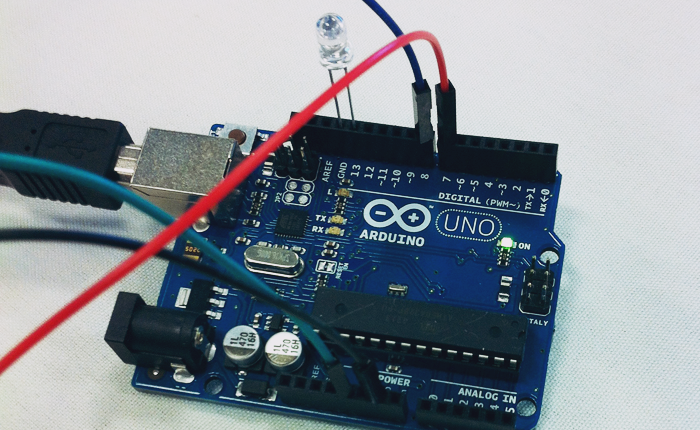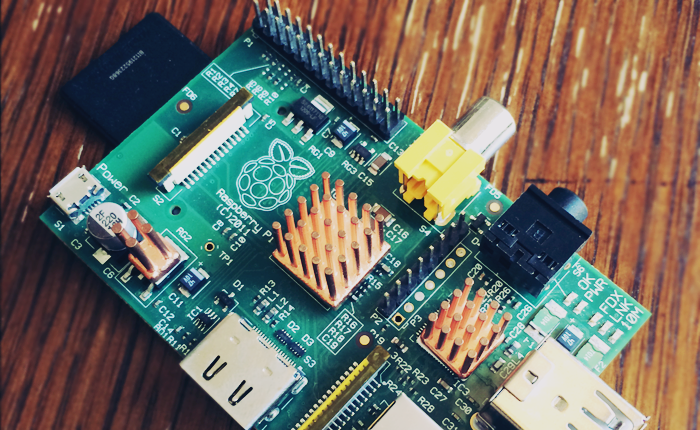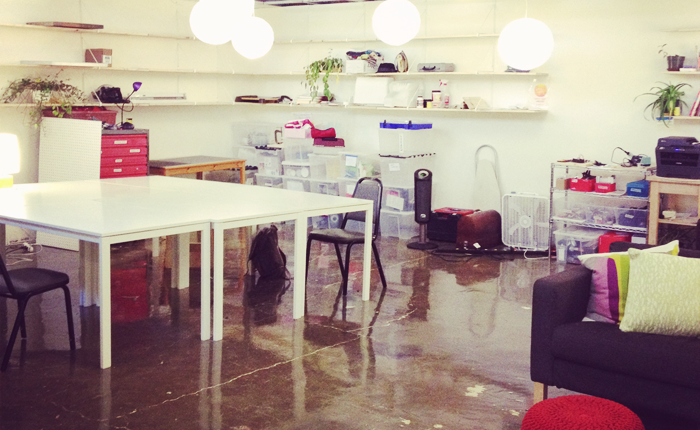Three Questions on the Hardware Revolution
Julia Grace on How to Hack Your World
Model View Culture interviews Julia Grace about hacking the world. We talk about her work building an indie hardware marketplace, the evolution of hardware hacking, and making engineering accessible to a new generation.
This article is an excerpt from the full-length interview, which will appear exclusively in the Model View Culture Quarterly. Subscribe now to get your copy – subscriptions are only available for a limited time and directly support independent tech media.
You’re the Head of Engineering at Tindie – can you tell us what Tindie is and what you do?
Tindie is a platform for discovering indie innovations. We are the only marketplace focused on helping you hack the world around you.
We have thousands of awesome products that are breaking the boundaries of what is possible to do with hardware. For example, the AirPi is a kit, created & sold by two 19-year-olds, that turns a Raspberry Pi into a weather station for only $90. It senses temperature, humidity, air pressure, CO levels, light levels, UV levels — if you wanted to do this before the AirPi you would have paid hundreds if not thousands of dollars. 
The AirPi, the Raspberry Pi weather station, has made it easy and affordable to have your own weather monitoring setup.
I joined Tindie as the first full-time hire tasked with building and leading the engineering team. In the beginning I was writing a lot of code, interviewing a lot of engineering candidates, working with Emile (who founded Tindie) to determine the culture and values of the company we were building.
While I still write code almost everyday, my role has evolved to ensuring we are making the right high level technical decisions to achieve our short and long term goals. Emile and I spend a lot of time determining our strategic vision, then it’s my job to execute on that vision from a technical standpoint.
Let’s talk about the history and evolution of hardware hacking. Can you tell us what each new piece of hardware opened up in terms of accessibility, affordability and the population that can use it?
Basic Stamp
In the early 1990s, this was one of the initial building blocks you used if you wanted to get into hardware. It cost $100 (about $160-180 in 2013 dollars) and you had to write BASIC to program it. While BASIC isn’t terribly complex, it isn’t very beginner-friendly either.
So while the Basic Stamp meant you could use a commodity part, they were not cheap or easy to use in the way hardware is today.
Arduinos [2005]
Arduino started in 2005 as a project for interaction design students in Italy. I have met one of the founders, Massimo Banzi, and he always emphasizes how important it was to make Arduino not only inexpensive ($25), but also beautiful.
The boards were designed with a strong design aesthetic so they looked modern and approachable. The programming language was also designed such that non-programmers could get started easily.
An Arduino UNO board being programmed.
One of the awesome things about the Arduino is you can load different firmwares onto the microcontroller — this means you can program the Arduino using different programming languages, including Python. This matters because software engineers often have their favorite language and may not want to learn a new one, and so now suddenly they can use this language in new contexts.
Raspberry Pi [2012]
The Raspberry Pi is a credit-card sized single-board computer that comes pre-loaded with Linux. By dramatically lowering the cost of a computer ($25), the Raspberry Pi opened doors for a lot of people that previously might have been priced out of computing, and enabled a whole ecosystem of new products to emerge that are built on the Raspberry Pi.
The Raspberry Pi Microcontroller
Now granted, the Raspberry Pi comes with no peripherals (meaning you would need to buy your own monitor, keyboard, etc.) but it made, for example, teaching programming classes to kids, like Julia Elman’s Teen Tech Camp possible. You could now buy a fleet of computers for cheap, something previously impossible.
Now the Raspberry Pi has become a platform: I have a friend that built an entire home automation system (including a thermostat that’s like Nest, and more) using a Raspberry Pi; people use the Raspberry Pi as a way to anonymously browse the web and again, this is just the beginning.
Tessel
Nearly every developer involved at some capacity with building web applications has to write some JavaScript. I recently spoke at the Web Developers Conference New Zealand and although the conference was language-agnostic, everyone wrote JavaScript.
So when you have native language support for a piece of hardware, this opens doors. Traditionally JavaScript developers have felt furthest from the “hardware,” working mostly in the web browser. They are called “front-end” developers because the hardware usually lives way down at the bottom of the stack — hardware used to be the “back-end” developer’s job. This has started to changed with Node.js, where you can have a JavaScript back-end.
The NodeBots community has really run with this, and now we see the rise of JavaScript robotics, based around the Johnny-Five code library.
With NodeBots not only can you create awesome robots that battle each other, but the thought is that one day you’ll be able to control your thermostat using JavaScript. 
NodeBot robots are built with Arduinos and programmed in Javascript.
What programs out there are getting early access to hardware to groups who wouldn’t get access otherwise? What are they doing that’s radical and new?
Several months ago I spoke to a group of middle school students about what it’s like to be an engineer.
The teachers told me the students all think engineers are like Sheldon from the Big Bang Theory – nerdy white men of high socioeconomic status. What is frightening is that this is the next generation of engineers and they don’t think they should be engineers.
Many programs are getting young people access to hardware early, before they have written off engineering because they don’t think they look or act “like engineers”. Almost all of these programs can exist because they can get the kids started on Raspberry Pis (Linux computer that retails < $40) — hardware has never been this cheap before.
- Hacker Scouts is an alternative to Boy/Girl Scouts that encourages kids to get involved in STEAM (science, technology, engineering, art, and math) activities.
- Student RND is a Seattle non-profit targeted at educating students in middle school through college about programming and engineering.
- Some TechShop locations have paid programs for kids 12-17 and allow them to become members.
- Pearl Hacks in North Carolina and Virginia puts together hackathons for college and high school women with an emphasis on hardware.
- At PyCon 2013 there was a “Young Coder” workshop that taught Python programming to kids using Raspberry Pis — it was a smashing success and will happen again at PyCon 2014.







